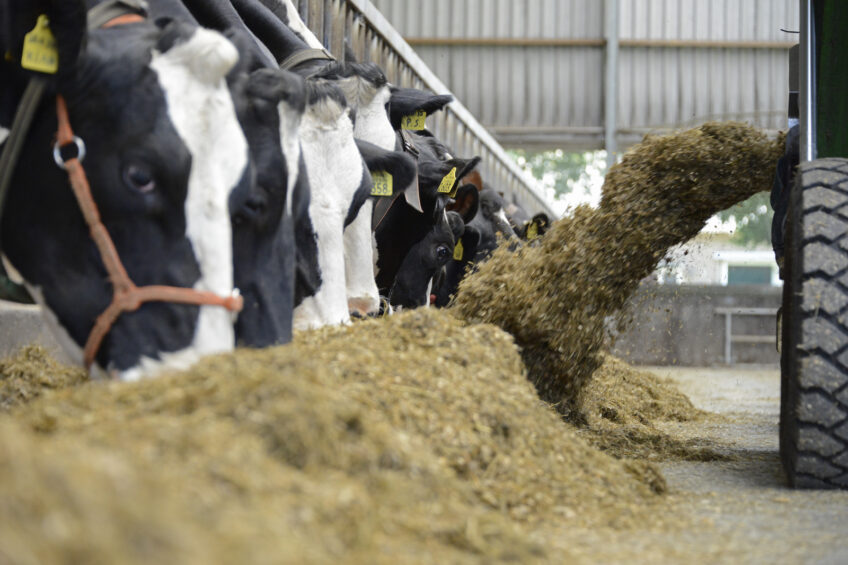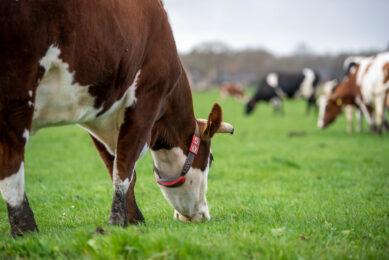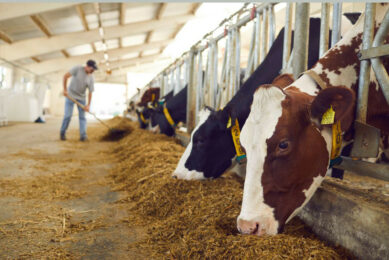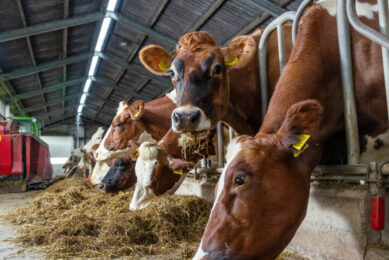Plant extracts can mitigate methane emissions

Several strategies regarding feeding, feed additives, feed conversion efficiency, microbial interventions or management practices show promising results to reduce enteric methane production from livestock. Here we describe the results with a plant extract in the diet.
Today, climate change is probably one of the most serious environmental challenges facing the world. The natural greenhouse effects are intensified by high concentrations of greenhouse gases (GHG) due to human activities, leading to an increase of the earth’s temperature.
Agriculture is the third largest contributor when it comes to the release of GHGs to the atmosphere, but also represents one of the most exposed sectors affected by climate changes. In livestock production, some dietary solutions are proven to reduce emissions involved, including the supplementation of phytogenic (plant derived) feed additives (PFAs). Natural dietary practices get down to the root of the problem and counteract the formation of undesired emissions from the beginning. On a global scale, the key anthropogenic GHGs are carbon dioxide (CO2), methane (CH4), nitrous oxide (N2O) and fluorinated gases (e.g. HFC, PFC and SF6). Several economic sectors, including agriculture as the third largest one, contribute to the release of GHGs to the atmosphere. The production of methane is very low, compared to CO2, but its effect is 20 times as strong as CO2, and therefore, methane contributes to the greenhouse effect with 20%. With 50%, methane is the largest source of agricultural emissions overall, of which 70% originate from rice production and animal husbandry. Methane emissions mainly derive from enteric (microbial) fermentation by livestock (see Figures a/b), especially in cows and sheep, as well as from manure management. Nevertheless, ruminants contribute to the global GHGs with only 3%.
Methane production in dairy cows
A part of the loss of dietary energy in dairy cows comes from methane, which is produced in the digestive tract during fermentation. Typically dairy cows show losses of about 6 to 10% of gross energy due to methane production. In ruminants, around 90% of methane production occurs in the rumen and is expired through the lungs. In the rumen, methane is produced by microorganisms, the so-called methanogens or methanogenic archaea bacteria, closely associated with rumen cilliated protozoa (Entodinium caudatum), as a by-product of anaerobic fermentation. The rate of methane production reaches its maximum shortly after feed intake.
After the intake, the carbohydrates of the plant (from cellulose, hemicellulose, pectin, starch and sugar) are hydrolysed to pyruvate by extracellular enzymes. Afterwards, the pyruvate is further fermented into volatile fatty acids (acetate, butyrate and propionate) and gazes (CO2 and H2). It is a fact that the more fibre is fed, the more cellulolytic bacteria accumulate and as a consequence, the more acetate is produced. Contrary, the more dietary concentrates (including nonstructural carbohydrates like degradable starch or sugar) are fed, the more propionate is produced by the propionic bacteria, going along with a lower pH. The methane production increases with the acetate: propionate ratio and with an increase of the pH, whereas a low pH increases the propionate production and inhibits the archaea bacteria in their fermentation process. This actually means that the more feed concentrates are used in ruminant´s diets, the more NSC (nonstructural carbohydrates) intake we have and thus, the less methane will be produced.
Ways to reduce methane production
So far, several strategies regarding feeding, feed additives, feed conversion efficiency, microbial interventions or management practices show promising results to reduce enteric methane production from livestock. In dairy cows, improving feed conversion efficiency (the amount of feed consumed per l of milk produced) leads to a decrease of methane output per litre of milk, because methane production decreases due to a higher milk production. Highly digestible diets may also lower the amount of methane emitted. Practices that increase the proportion of feed utilised for performance (e.g. milk), rather than simply being used to maintain the animal, reduce the amount of emitted methane per unit of animal product produced. For example, GHGs resulting from milk production can be reduced by increasing the milk yield. The FAO showed that the GHGs are more commonly occurring in areas with a lower milk production (Figure 1).
Direct inhibition of methanogenesis
As to reduce methane emitted by dairy cows, it is necessary to reduce methanogenic archaea bacteria. Decreasing the protozoa level in the rumen leads to impaired synergies between entodiniae (protozoa) and the archea bacteria. Some plant extracts, certain essential oils and saponins, are known for their effectiveness against these bacteria and protozoa and help to control them. Supplemented polyunsaturated fatty acids (PUFA) describe another possibility to reduce protozoa and thus, methane production in dairy cows. However, their application is associated with decreased milk yield and milk fat content, as PUFAs can become toxic to the entire ruminal flora. Dairy cows being fed diets rich in nonstructural carbohydrates and concentrates have a lower output of methane, reflecting the low fibre content and the high amount of fermentable energy, but therefore also show enhanced risk of acidosis.
Natural solutions for reduction
A lot of research has been conducted on strategies to reduce methane emissions from dairy cows and beef cattle, focusing on nutritional solutions. Feed additives, including phytogenic (plant derived) products, have been able to substantially up-value ruminant rations for years, be it for reasons of improving performance, protein efficiency or energy efficiency. But plant derived products are also on the rise when it comes to emission reduction in livestock production. In dairy cows, the use of specific essential oils achieved good results regarding the reduction of ammonia and methane losses that are associated with protozoa and bacteria. The use of saponins leads to an improved propionate pathway and thus, decreasing methane production as well. Figure 2 shows the results of an in vivo trial with dairy cows that were fed a phytogenic feed additive* supplementation of the phytogenic product, which led to a reduction of methane emitted of about 6.5% (22.2 g/l milk), compared to control animals (23.7 g/l milk). Results of this trial also proved the possibility to reduce methane production whilst at the same time increasing milk yield by about 1.8 l per day (data not shown). Feed efficiency increased by about 5% (1.29 l/kg vs 1.26 l/kg DMI) due to the addition of the phytogenic feed additive compared to the control group (see Figure 3). This confirms that the phytogenic feed additive improved the protein and energy efficiency of the diet whilst contributing to an obvious reduction of methane emissions.
Conclusions
Challenges regarding sustainable dairy production with respect to the ever-present environmental problems, especially facing the climate change, emphasise the importance of nutritional expertise and optimum feeding management. Phytogenic feed additives have shown their ability to improve performance, support health status and at the same time contribute to a reduction of emission losses in animal husbandry. Hence they represent a crucial though natural tool on the frontline in the challenge of managing the balancing act of profitable and yet environmentally friendly livestock production.
*Actifor®
Join 13,000+ subscribers
Subscribe to our newsletter to stay updated about all the need-to-know content in the dairy sector, two times a week.











